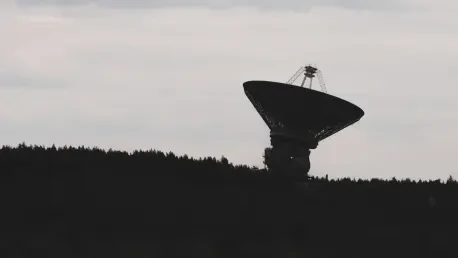In the intriguing intersection of technology and astronomy, the quest to identify extraterrestrial technosignatures has captured imagination worldwide. Recent advancements have seen machine learning play a pivotal role in analyzing vast datasets, aiming to pinpoint these elusive signals among cosmic noise. The Breakthrough Listen initiative, a leader in this field, employs sophisticated algorithms to process enormous amounts of radio data from hundreds of nearby stars. Utilizing telescopes such as the Parkes and Green Bank, the project strives to detect anomalies that could indicate the presence of alien technologies. The task is formidable, not only because of the sheer volume of data but also due to the complexity and diversity of potential extraterrestrial signals. These signals are anticipated to mimic human technologies, adding another layer of complexity as they might be hidden among human-made contaminants in radio observations.
Challenges in Technosignature Detection
The search for alien technosignatures involves navigating a challenging multidimensional parameter space. This complexity requires innovative analytical techniques to address potential signal diversity. Machine learning algorithms are tailored to handle these difficulties by focusing on anomaly detection, a process of sifting through cosmic data to find unusual frequency patterns and persistent temporal occurrences. Such techniques allow researchers to rank candidates for further examination by human experts. The machine learning algorithms enhance the efficiency of identifying promising candidates compared to random methods, essentially revolutionizing how technosignatures are sought out. Despite these advances, the task remains daunting, illustrated by the analysis of approximately 10^11 spectrograms. Even with this large scope, about 20,000 candidates emerged for deeper inspection, none survived strict scrutiny, showcasing the high standards and complexity involved in validating potential alien signals.
Recent Progress and Insights
Despite the lack of success in confirming extraterrestrial technosignatures thus far, the Breakthrough Listen project yields valuable insights. The data underscores the significant obstacle posed by interferences from human-made signals. While no candidates met the stringent criteria necessary for claim verification, the use of simulation and machine learning has advanced the analytical methods used in this field. The project illustrates the enormity of the task of separating potential extraterrestrial signals from noise and how evolving technology may aid this quest. Beyond mere detection, these methodologies could refine understanding of data processing and enhance techniques applicable across various scientific domains. The initiative remains crucial for fostering innovation and collaboration among scientific epistemologists. It emphasizes the need for interdisciplinary approaches, synergizing technology and astronomy to approach the challenge with fresh perspectives and evolving solutions.
Future Directions in Technosignature Research
Looking ahead, the findings reaffirm the necessity of adapting strategies and methodologies to improve results. Although no signal has been verified to date, the ongoing development of computational and analytical tools promises future advancements. Pursuing this objective demands continuous growth and evolution among detection technologies, spurred by cross-disciplinary cooperation. The venture embodies science’s ability to surpass traditional limits, driving the relentless exploration that could eventually pinpoint alien technosignatures. The Breakthrough Listen project remains at the forefront of this endeavor, yet also stands as a testament to the remarkable complexity inherent in the exploration of the skies. As machine learning algorithms become increasingly sophisticated, the field anticipates tackling currently unforeseen challenges. This continuous journey not only deepens understanding of our cosmic surroundings but also revives the enduring human aspiration to connect with civilizations beyond Earth.









